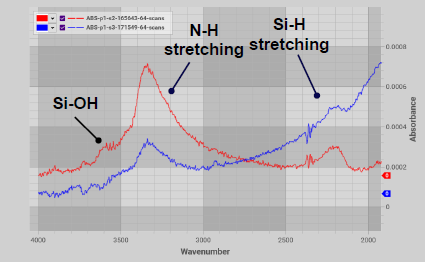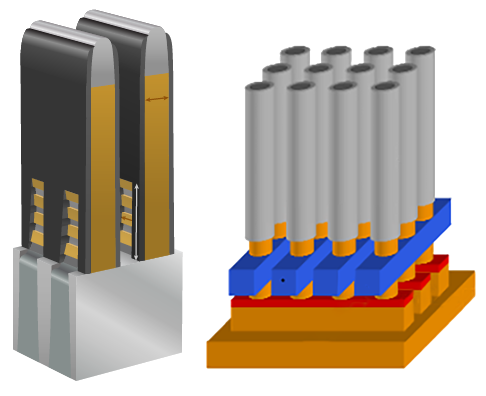Advanced FTIR Optical Modeling for Hydrogen Content Measurements in 3D NAND Cell Nitride and Amorphous Carbon Hard Mask

Abstract
Fourier Transform Infrared spectroscopy offers inline solutions for chemical bonding, epi thickness, and trench depth measurements. Through optical modeling of the transmission or reflectance spectra, information about the electronic structure and chemical composition may be obtained, which can be used for process control and monitoring. In this article, we demonstrate the measurement capabilities of FTIR for the hydrogen bonding in cell silicon nitride and amorphous carbon hard masks (ACHM), which are used for 3D NAND fabrication. For cell silicon nitride, deconvolution of the spectra allows differentiation between individual peaks corresponding to Si-N, Si-H, N-H, Si-O, and Si-OH bonds. This differentiation identifies wafers with varying hydrogen content and distinct processes. Similarly, for ACHM, peak areas related to sp2 C-H bonds and aromatic C=C bending reveals the hydrogen skew conditions in three wafers. Notably, a linear relationship between high broadband absorption and low C-H bonds (and aromatic C=C) peak area is observed. The measurements exhibit good repeatability across ultrathin silicon nitride and thick ACHM samples. We believe the technique can be valuable for compositional process control, considering the significance of hydrogen content in cell nitride performance and endurance, as well as the influence of hydrogen content and carbon sp2/sp3 ratio on selective etch ratios in dry etch processes involving ACHM and mechanical properties of the films.

